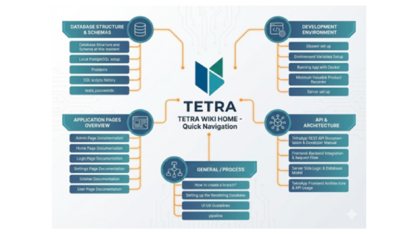In today’s fast-paced digital environment, efficient incident management is crucial for maintaining seamless IT operations. CitizenM, a hotel chain company based in Voorschoten, Netherlands, recognized the need to enhance their TOPdesk ticketing system to improve IT support efficiency, ensure quicker resolution of IT-related issues, and facilitate task delegation through effective categorization as well as to improve decision-making via statistics related to TOPdesk data. To respond to these needs, a project was started, with the main requirements to improve incident management, identify issues early in the process, and track team performance.
Delegating incidents manually can be challenging and ineffective. Because of the volatile nature of the IT department, where often new employees are hired (especially interns and external/temporary employees), employees with the same or similar positions do not have the same access to the applications, as the company must be careful in terms of granting administrative access to its less experienced employees. Considering that application management is one of the main tasks of IT Support and this becomes a challenge when the requests received on TOPdesk are shared between every person in the team. The overwhelming amount of information shown, and the lack of filters can cause delays in problem resolution. The solution to tackle these challenges was to create a mechanism that separates requests into categories that consider each employee’s experience and expertise. So, the first requirement, to improve incident management, was solved by creating a page that would show the overview of the TOPdesk data divided into different categories. This landing page of the developed application is shown in Figure 1.

The second requirement, early issue identification, was done by creating a page to display graphs that show how many tickets for each subject are currently open and a list of unassigned tickets. The developed page is shown in Figure 2. That means, for example, that there could be one ticket for Excel, two for PowerBI, and thirty for Recurly. This high number of Recurly tickets can indicate that there is an abnormal problem occurring with it, and by noticing this, the team is able to recognize the issues fast and start solving it. A fast response to incident management is crucial tin keeping the company working as normal, mitigating problems in their early stages and preventing them from developing into major issues.

The third requirement, performance tracking, was done by implementing a page for graphs that demonstrate employee performance. The developed page is shown in Figure 3. This feature was directly requested by the team leader, making it easier to understand each employee’s strengths and weaknesses and identify patterns in case something is not occurring. Together with the employee performance graphs, the team performance and number of tickets received per month was also included.

The integration of intelligent incident management practices at CitizenM has set a precedent for IT departments seeking to optimize their support systems. By embracing technology and data analytics, CitizenM can not only improve their operational efficiency but also proactively address IT challenges, ensuring a robust and reliable IT infrastructure.
This article is based on a thesis written by Melissa Gimenes Alvarenga Ferrari and supervised by Anna-Kaisa Saari. Thesis can be found from https://urn.fi/URN:NBN:fi-fe2024050224834




